The Last Kiss
Before seeing Lichtenstein's work, we had been wondering how to think about it, how to present it. Pop art has presented itself in various guises since the 1960s, and its reproducibility, superficiality and popularity are all too familiar. Is there a side to it that is waiting to be discovered, a side that is inflated and decadent, or a side that is lost behind the richness?
"Art" maybe is just a special term. We have seen how it has changed several times in the era of the end of art history, and how it has recruited all the people or things intended to be "anti-art" into the term of "art". The only question that remains for us to consider is how to reconceptualize white, and how to re-present Pop, which aims to be anti-gaze and anti-authority, in a position where the white box of the museum has already established the sacred authority of the "art", so that it still resonates in today's context.
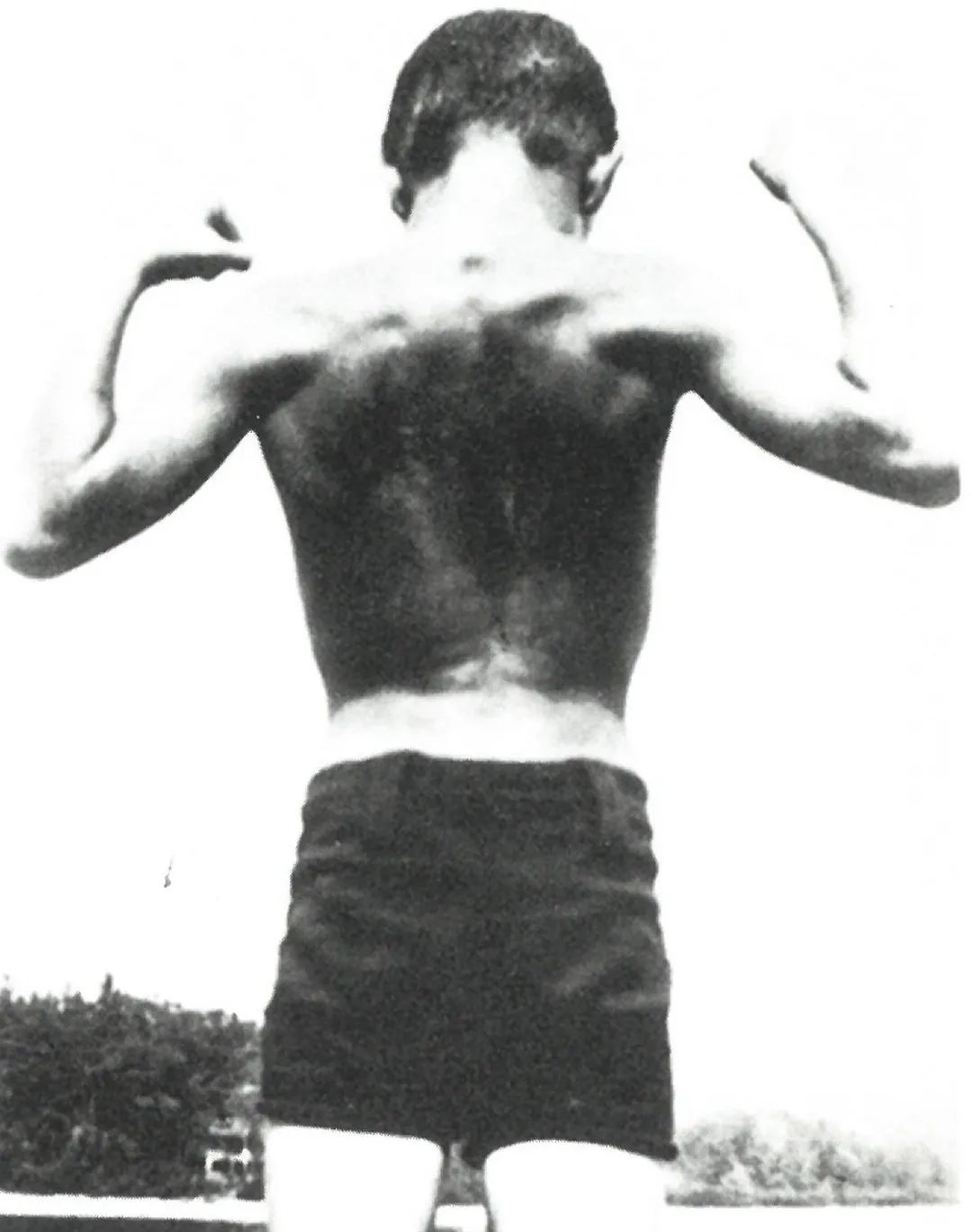
Before continuing with this topic, it is necessary to first talk about the main character Lichtenstein. Born in New York in 1923 to a real estate agent and a piano player, Lichtenstein joined the Army in 1943 at the age of 20 and was stationed in Europe for World War II, most recently working in an office just a mile from the front. .
He really began to work at a time when the classical Western tradition of reason was undergoing a truly profound rethinking as a result of World War II, and when television and advertising were revolutionizing the way society functioned. With the benefit of hindsight, Lichtenstein's personal experience fulfilled the two conditions that led him to Pop Art: firstly, he had experienced World War II and its subsequent social reconstruction, and secondly, he was familiar with the pictorial tradition of art history.
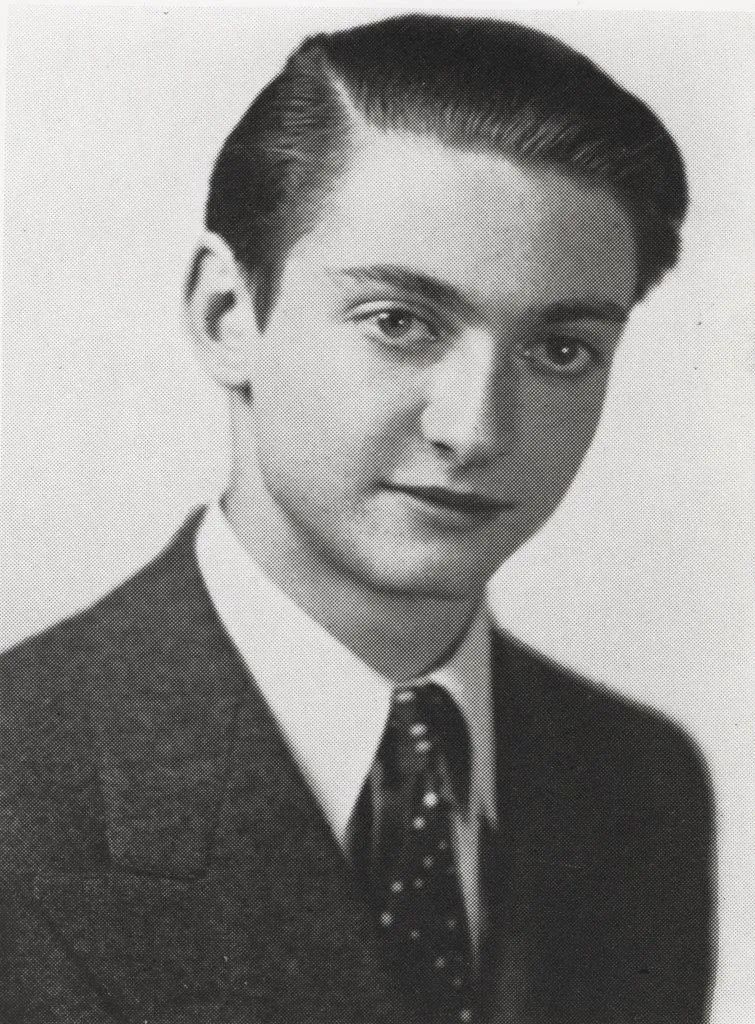
Nevertheless, Lichtenstein did not immediately find his own approach in the 1950s, and his paintings remained a continuation of Cubism, Stylistics, and Abstract Expressionism. It was not until 1961, when Lichtenstein created "Look! Mickey", only then did he announce the initial formation of his own artistic language.
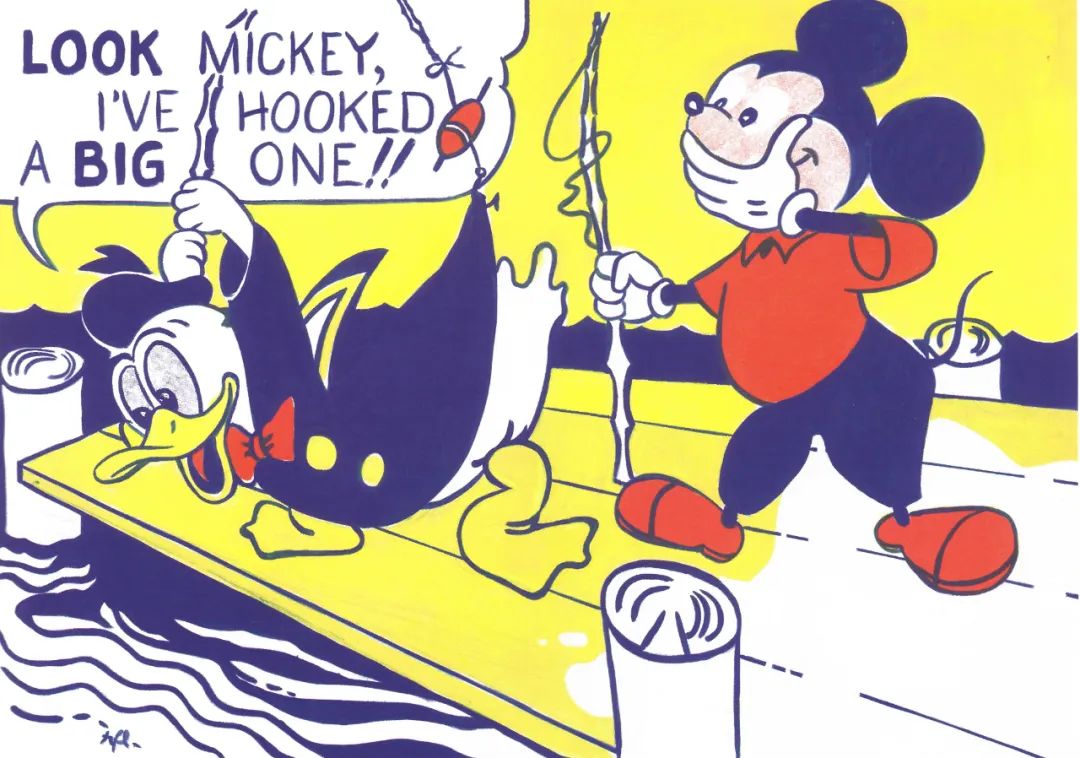
That same year, his paintings were represented by the Leo Castelli Gallery, and he then entered the prime of his career. Although Lichtenstein did not experience a less pleasant adolescence than Andy Warhol, this had a lifelong impact on the latter. Lichtenstein had few ups and downs in his life, but in his work, some of the emptiness seeps through.
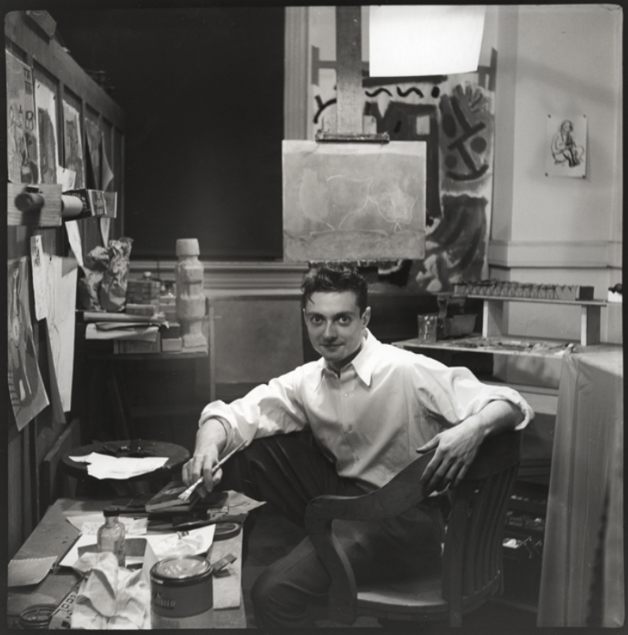
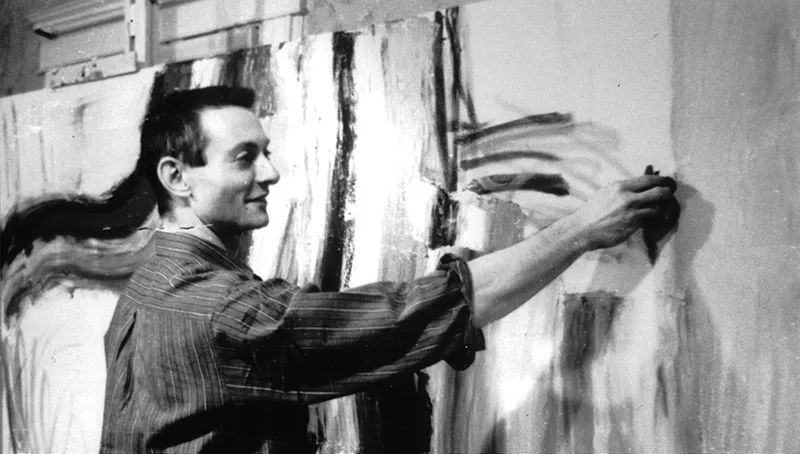
The first time I saw Lichtenstein's work up close was at night. After the work was unpacked and placed flat on the table, at some point the framed mirror ate up the beam of light, creating a gelatinous halo, and I was a little dizzy and drifting. Gazing again, some new textures emerged. Kissing men and women, flowing landscapes, restless still lifes, bright, grotesque, sexy, wild. I wouldn't think that Benday Point would go so far as to suppress this desire on the plane, although that is exactly what the artist tries to claim.
"The dot is emotionless; it's red is red, it's fifty percent red is fifty percent red, just like a mathematical problem." Lichtenstein says.
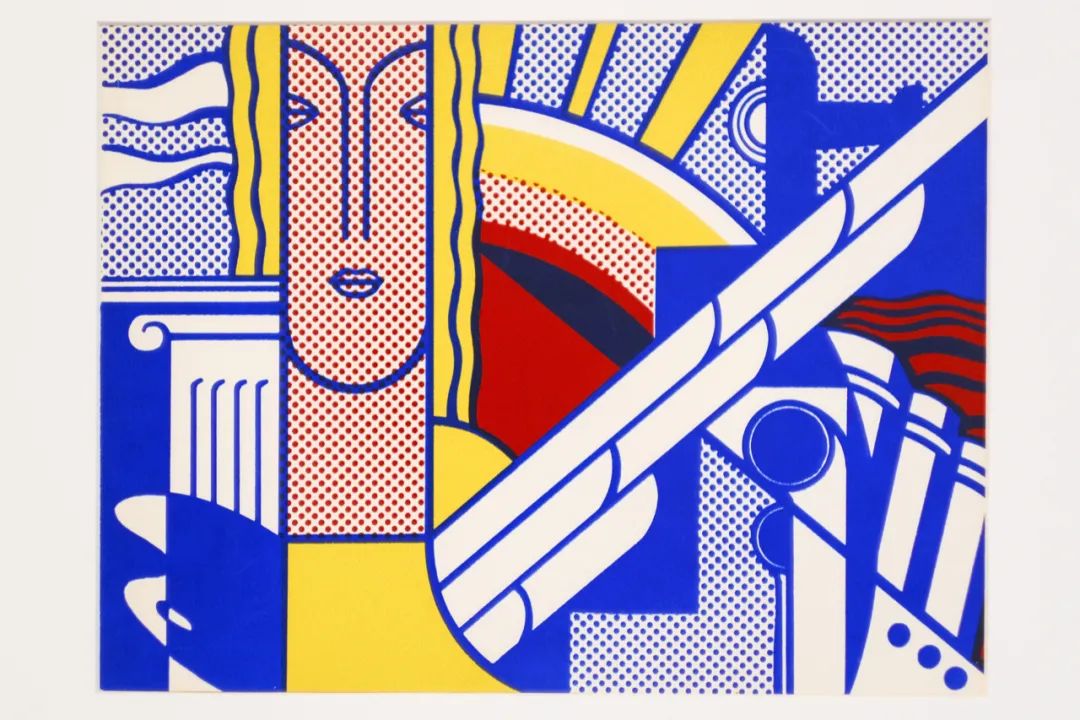
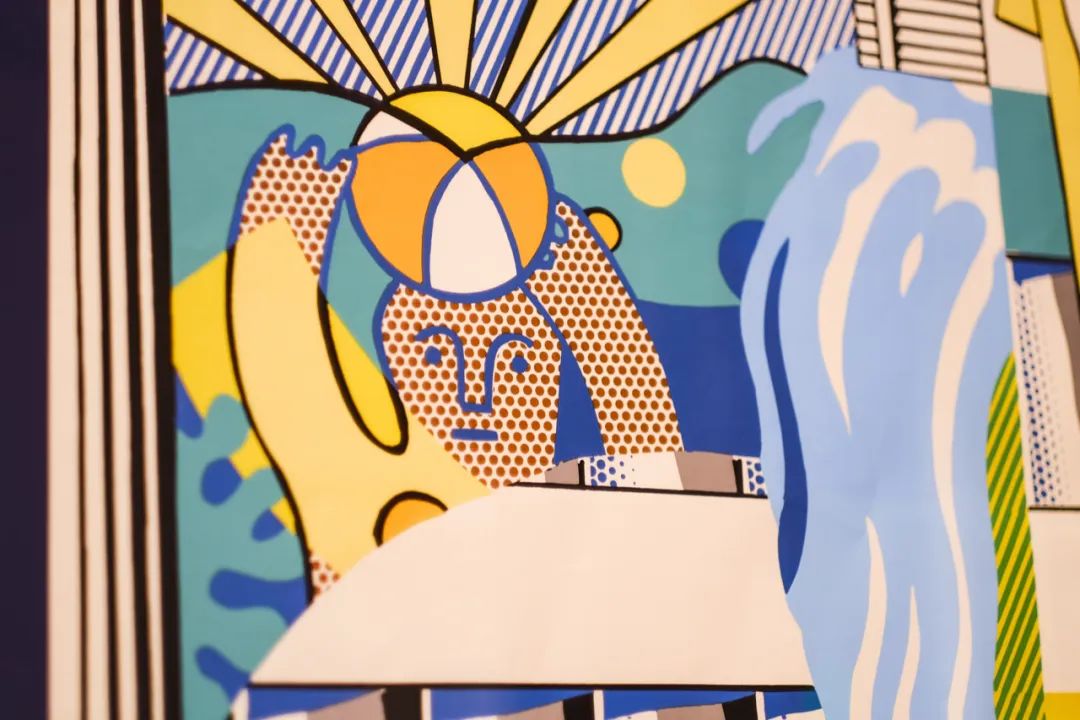
But it seems to me that the industrial matrix of dots happens to be a lustful rejection of Likbito. From the point of view of image-making, the fact that Lichtenstein finished painting the image and then screen-printed the Benedictine dots over the original is to me 100% proof of the desire to cover up. It is only in the cold order of the world that the beauty becomes thrilling, the view becomes extravagant, the imitation becomes discreet, and a kiss is stolen. In Lichtenstein's The Kiss No. 5, this dazzling contrast will be easily understood. Each point exudes repulsion in the most evenly proportioned denseness, an acquired force that tries to make the picture neutral or to separate them.
But that kiss will seem more fascinating, overcoming all, defying all.
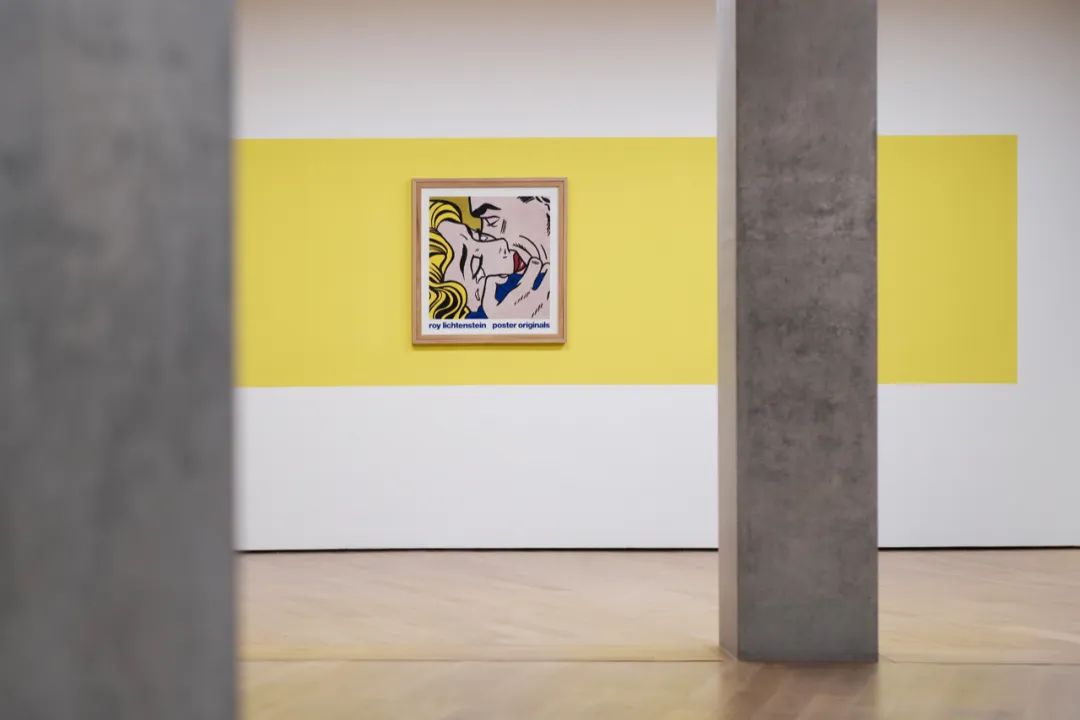
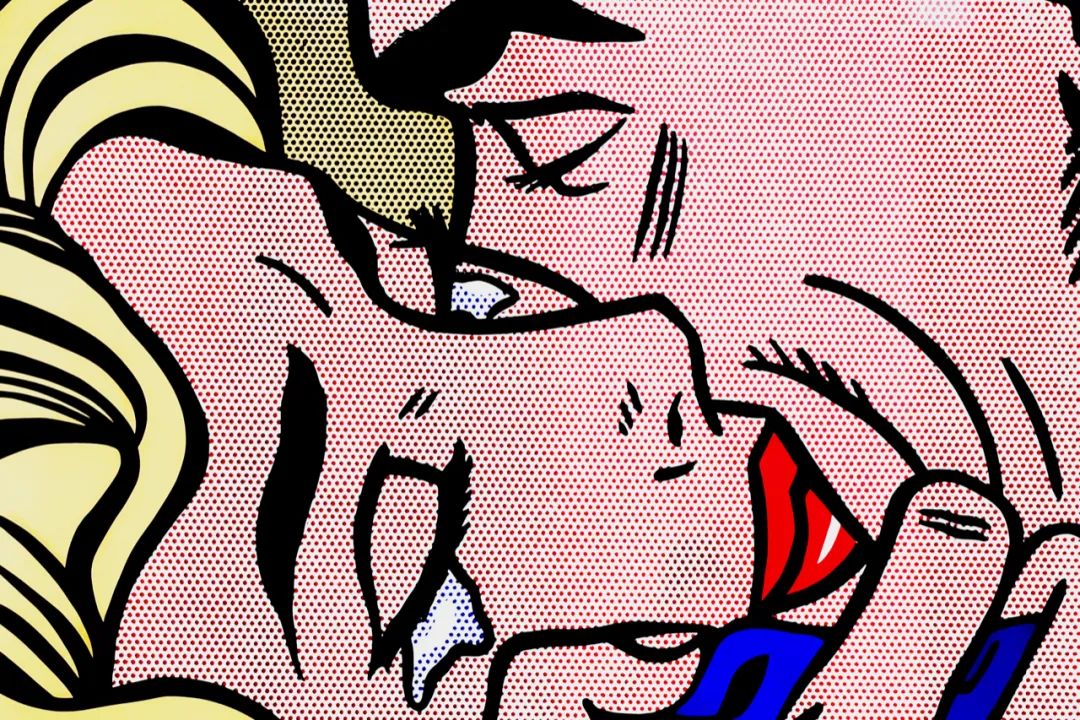
Just from the standpoint of the kiss, on the back of the story of lust and all defiance, there must be at the same time a remaining sense of desert, a crisis of criticality. Only then is the intensity of that kiss at its grandest.
This intensity can be understood in the context of art history. Pop art emerged as the end of abstract expressionism. The immediate significance of this is that Abstract Expressionism demanded a flow of brush strokes to demonstrate the subconscious scarcity and impulses of the creator, the hidden discourse being an extreme affirmation of individualism. But only a decade later, Pop Art displayed an attitude diametrically opposed to its own. Lichtenstein declared, "I wanted to make my paintings look like they had been programmed. I want to hide the traces of the hand in the work," and Warhol made similar remarks, "I no longer have to do it myself; my assistant or anyone else is able to copy my designs."
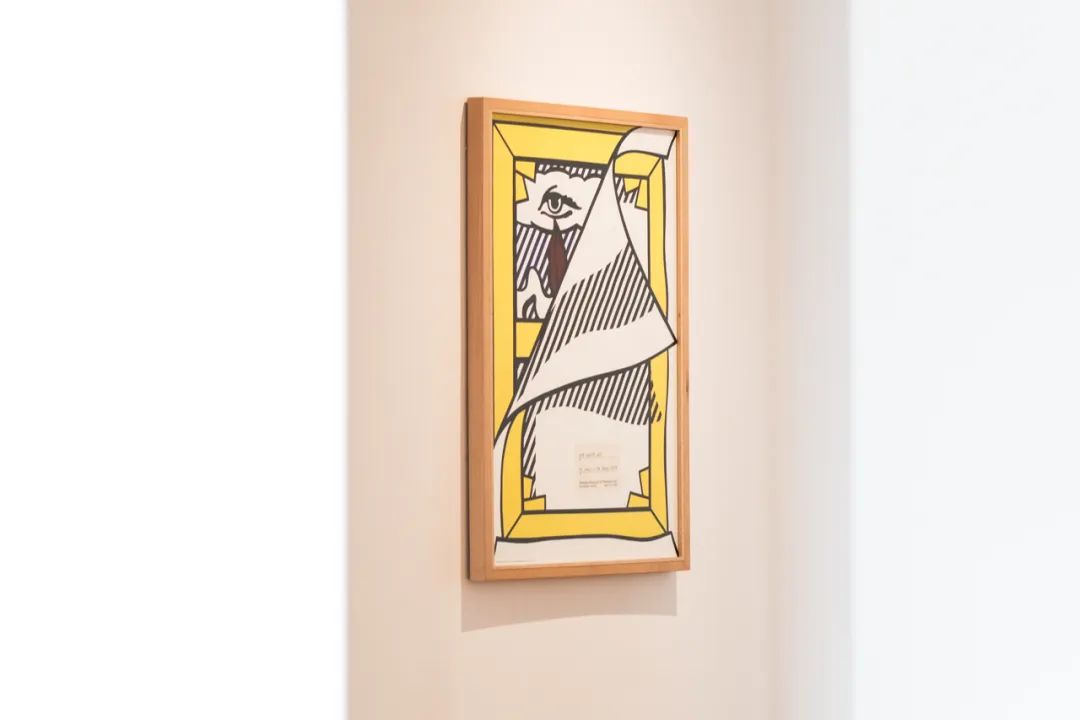
What the Pop artists are really trying to convey is that the time when art blossomed as subjectivity is over, or that the very constitution of the subject is now a questionable issue. It is the expression of sensitivity to the point that all three-dimensional, vivid images have been flattened and two-dimensionalized, that the tradition of stitching since Picasso has grown to its zenith, and that the illusion of perspective has been completely replaced. Panofsky and Deleuze's understanding of perspective is profound. It is not a real reproduction of reality, but a symbolization of ideas, appearing in the Renaissance era of the subject's self-awareness, representing man's attempt to grasp and control the world in a regular way. The depth of perspective is the depth of reason.
And it was precisely in the 1960s that Foucault announced the power of regulation and the death of the subject. 1967 saw the publication of Debord's The Landscape Society. "In societies where the conditions of modern production dominate, the whole of social life is shown as a vast accumulation of landscapes. Everything that has been directly experienced has left us and entered a kind of recreation." The age of images drags people into a new field composed of infinite image symbols. Henceforth existence no longer treads on solid ground, but floats softly in the reality created by mimesis. Lichtenstein's works expose the great crisis of this subjectivity, the deformed human face, the ultimate carnival, the cold landscape, the lost classics, and the last kiss of the romantic era. The vividness will be followed by a farewell.
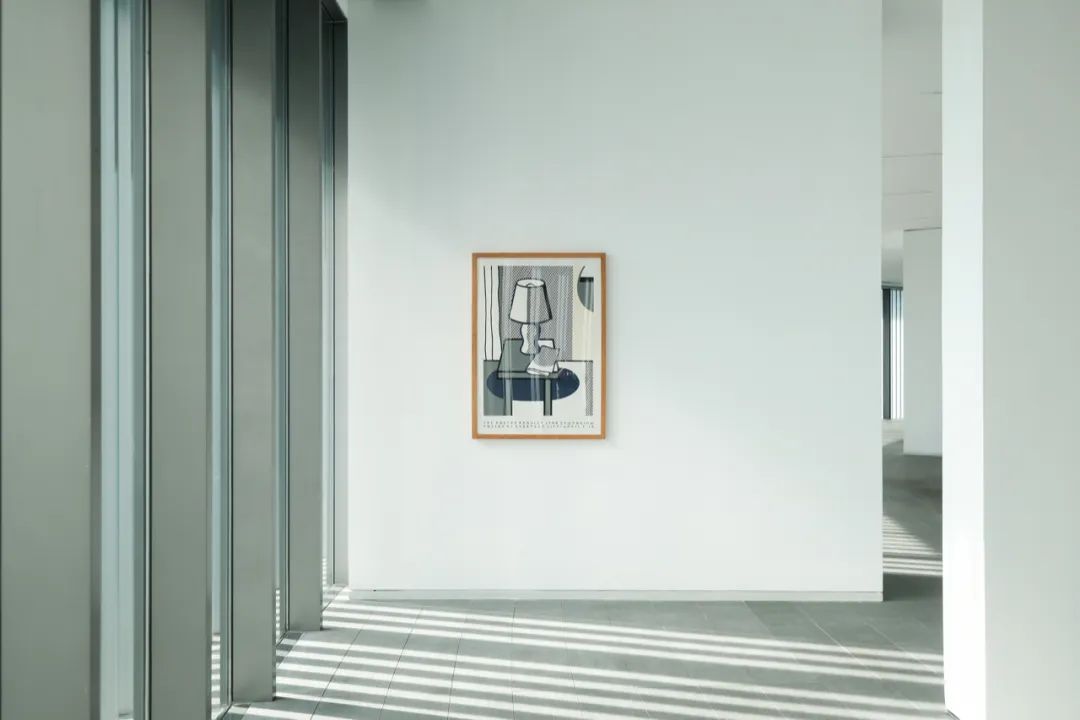
This farewell will also be reflected in the transformation of art historical images later in his career, including the Chinese landscape series from the mid-1990s onward and the imitation of modernist masters throughout his career. My initial perception of these works is not a visual comparison between the depth or superficiality of the originals and the Pop imitations, but rather an unrealistic association.
Every individual in the reproduction era who understands artworks on the Internet, in books and in photographs, until he or she stands two meters away from the original and looks at every brushstroke, every color difference, and even every tiny undulation on the canvas of the masterpiece, perhaps the memory of the work will always be Lichtensteinian, flat, omitted, unstable, and disordered. The artist demonstrates this layer of logic of the age of reproduction, where the spiritual halo of elegant art would fade away in the self-propagation of the medium, which leaves only a slightly chaotic image, lightly imprinted in Lichtenstein's prints.
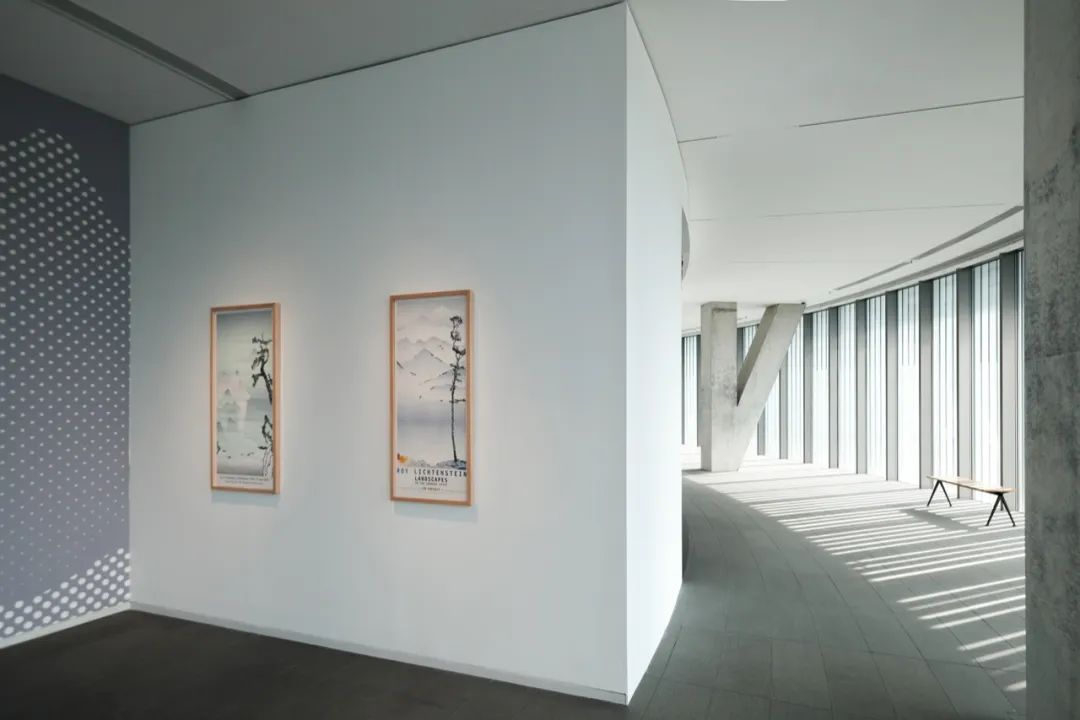
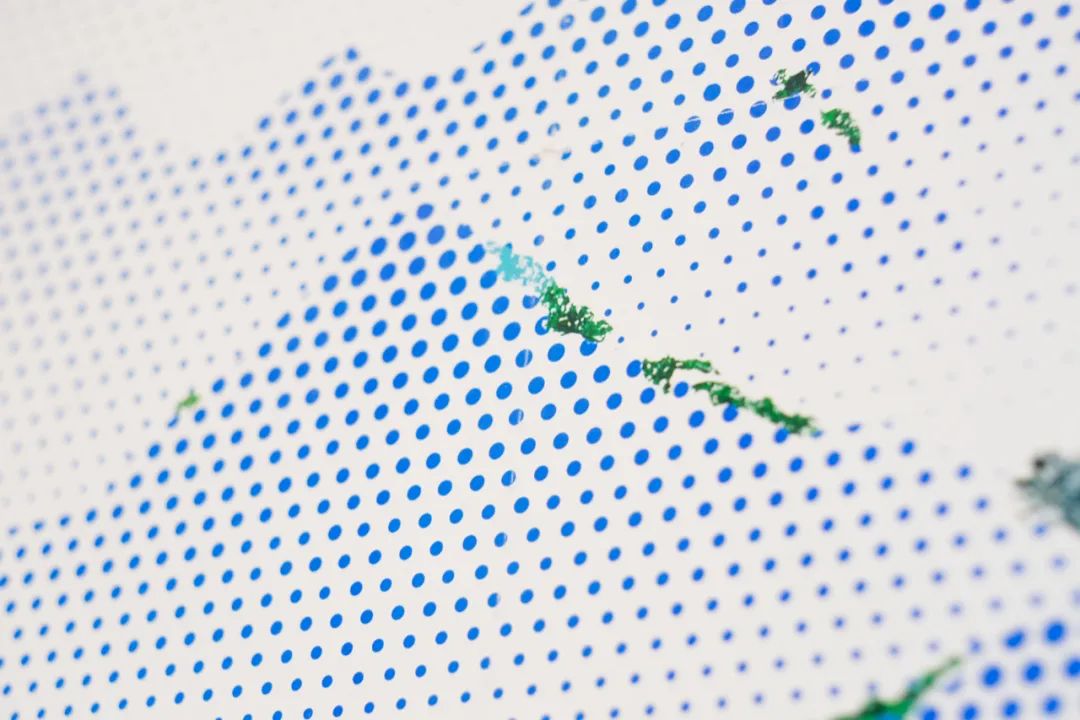
With this tone, we are able to re-examine Pop, to examine Lichtenstein, to put aside their gaudy, entertaining and popular attributes and see some unexplored second side. It is also only in this context that it becomes possible to see the meaning of whiteness anew, to see it not only as a means of artistic invocation and a way of sanctification. Rather, to borrow the language of Auger and Fukuyama, white is the objectification of the subject's chaotic and final view of space and time, behind which is the suspension of history and the unknown of reality. In white, time and context are no longer discernible, and sensibility and multiplicity are outlawed by reason and simplicity, which is precisely the condition of modern human existence after the "end of history".
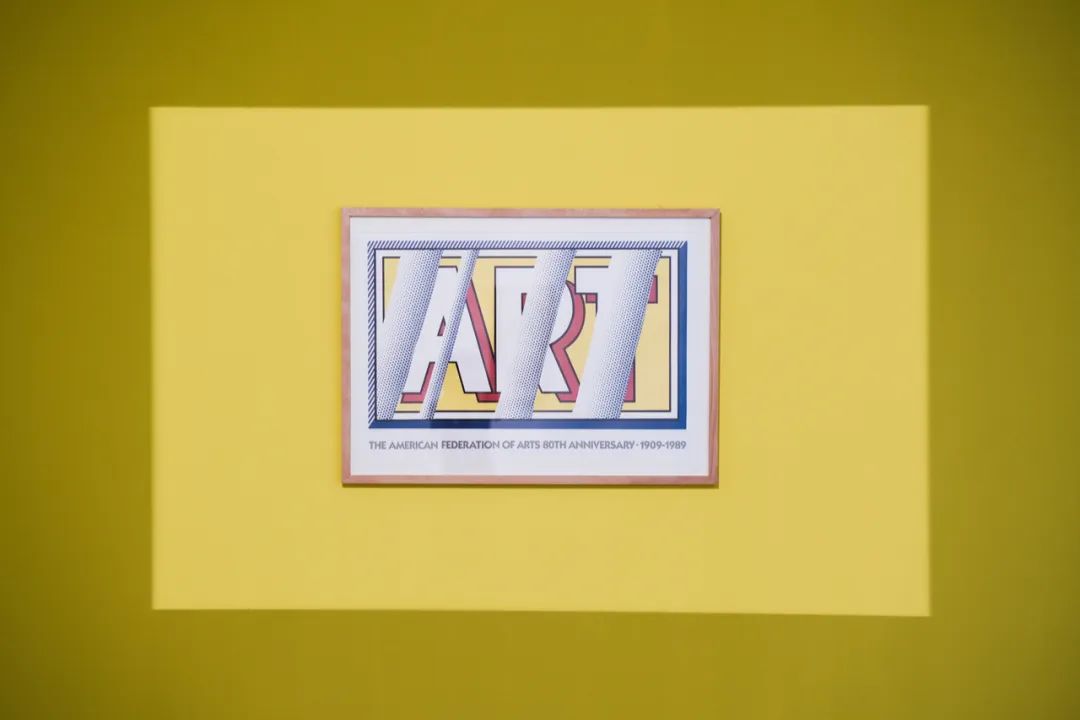
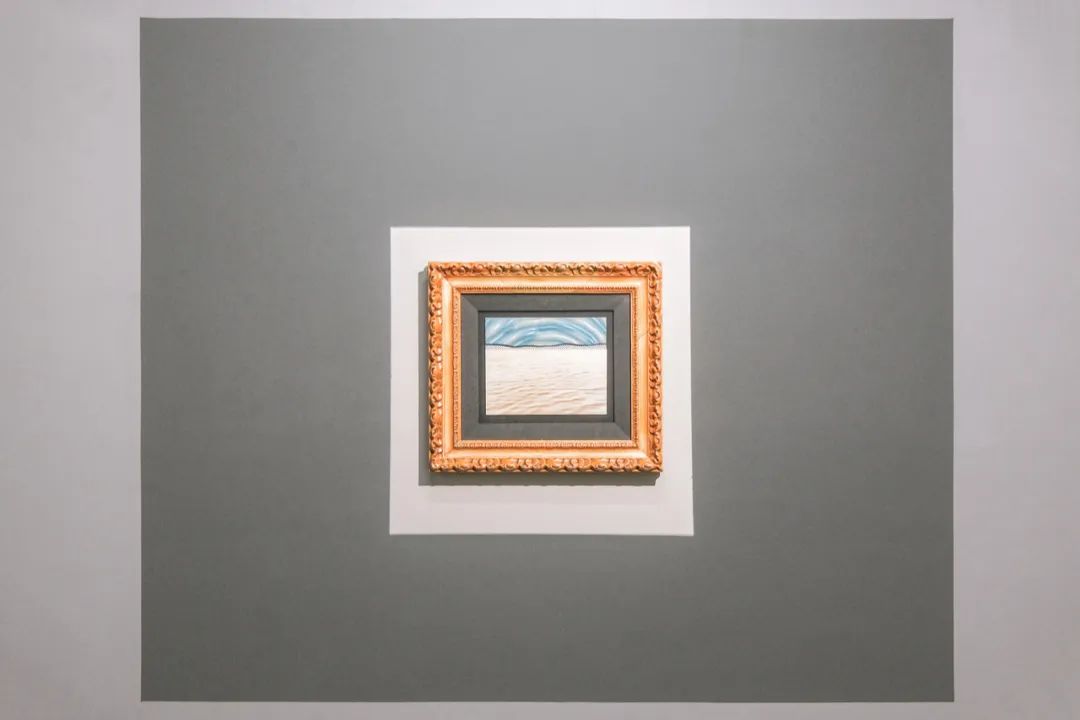
We present Lichtenstein with huge white walls, white lights and visual white space and gaps, presenting the abandoned colors and the power of modernity sweeping everything away, trying to create this contrast of desolation. The eye-catching commerce, empty scenery, flat patchwork and to-the-death emotions in Lichtenstein's work will show its powerlessness in the white. As we said before, it will be a farewell to the subject, the romantic, the concrete era. Today, when we look at Lichtenstein again, the unerringly precise enunciation will forever echo.
"This world is on the outside. Pop art just looks at it and accepts circumstances that are not good or bad to say the least. If you ask me how one falls in love with absurdity, with mechanized work, with bad art, my answer is: I just look at it, and it's here, and this is our world."
